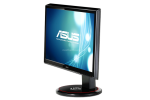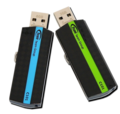3. Come abbiamo eseguito le prove
Configurazione di prova
Per valutare le prestazioni del sistema NVIDIA 3D Vision abbiamo assemblato un sistema particolarmente potente dotato di CPU Core i7 920, preventivamente overcloccato a 4 ghz, 6 GB di Ram Corsair Dominator e di un alimentatore Corsair HX1000.
| Processore | Intel Core i7 920 @ 4 Ghz (200*20) |
| Scheda Madre | Gigabyte X58 Extreme |
| Memoria RAM | 3*2 GB Corsair Dominator TR3X6G1600C7D |
| Hard Disk | Western Digital VelociRaptor 10.000 rpm 150 GB |
| Alimentatore | Corsair HX1000 |
| Sistema Operativo | Microsoft Windows 7 Ultimate 64 bit |
| Monitor | ASUS VG236H |
Per le prove abbiamo usato le seguenti schede video:
- NVIDIA GeForce GTX 480 1536 MB
- NVIDIA GeForce GTX 470 1280 MB
- NVIDIA GeForce GTX 460 1024 MB
Driver utilizzati
Driver NVIDIA: GeForce 260.63 con pacchetto 3D Vision aggiornato.
Batteria di test
Tutti i giochi sono stati testati alle risoluzioni 1280x1024, 1680x1050, 1920x1080 con le impostazioni di seguito riportate. Abbiamo seguito le impostazioni consigliate da NVIDIA per quanto riguarda i settaggi avanzati come ombre ed effetti.
- Call of Duty 4: Modern Warfare – DX9.0c – Qualità Massima AA4x
- FarCry 2 – DX10 – Qualità Massima NOAA - Shadow HIGH - Blom OFF
- Tom Clancy’s H.A.W.X. – DX10.1 – Qualità Massima AA4x - DOF OFF
- Resident Evil 5 – DX10 – Qualità Massima AA4x - Bloom OFF - Motion Blur OFF
- Mafia 2 – DX10 – Qualità Massima AA4x
- Dirt 2 – DX11 – Qualità Massima AA4x
- Metro 2033 – DX10 – Qualità High
- Lost Planet 2 – DX11 – Qualità Massima No AA, Test A









